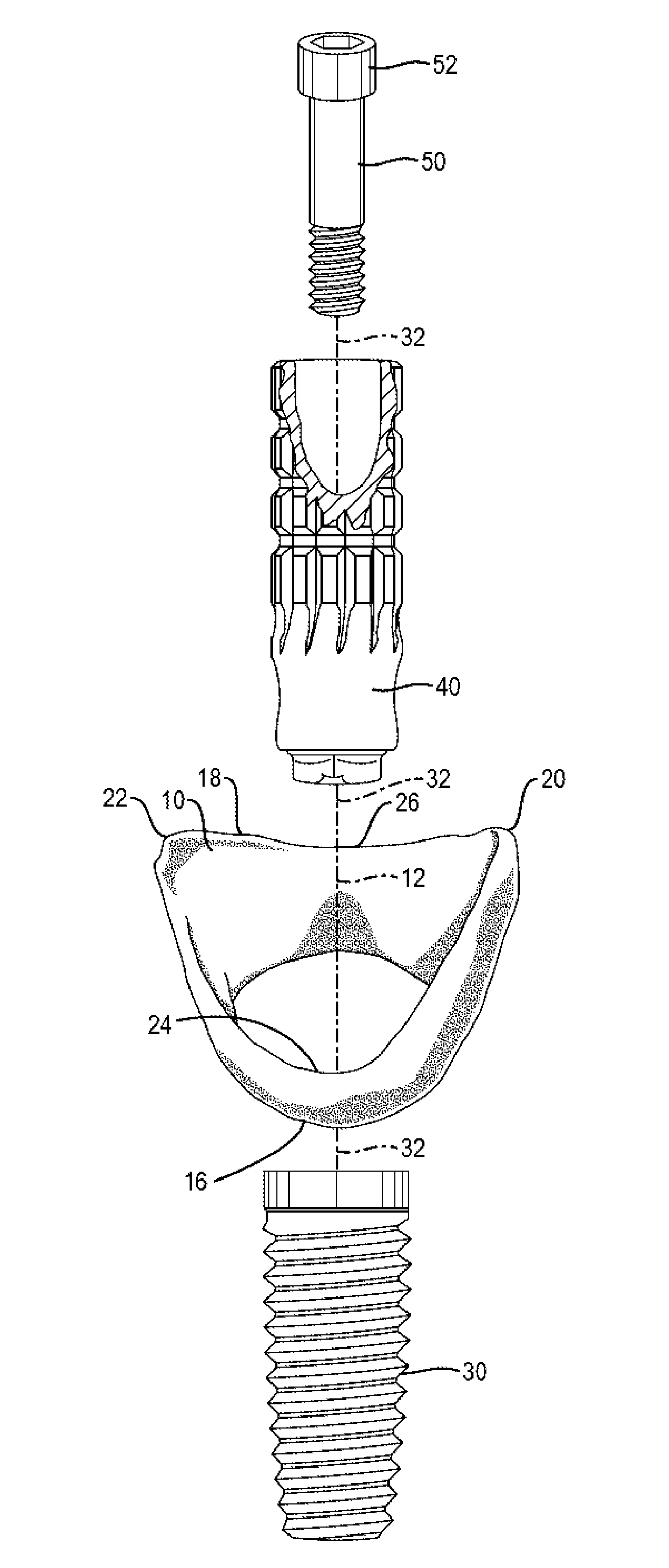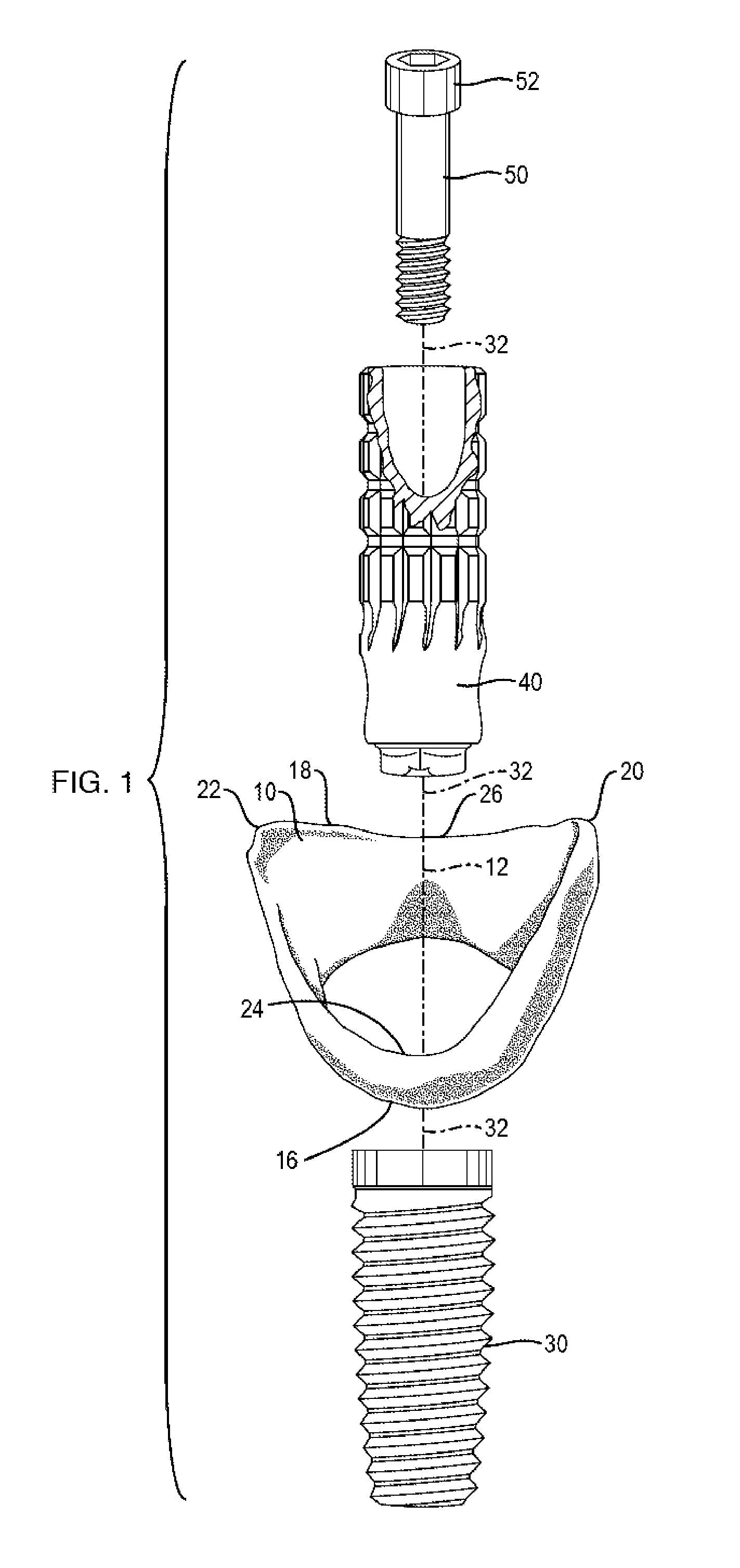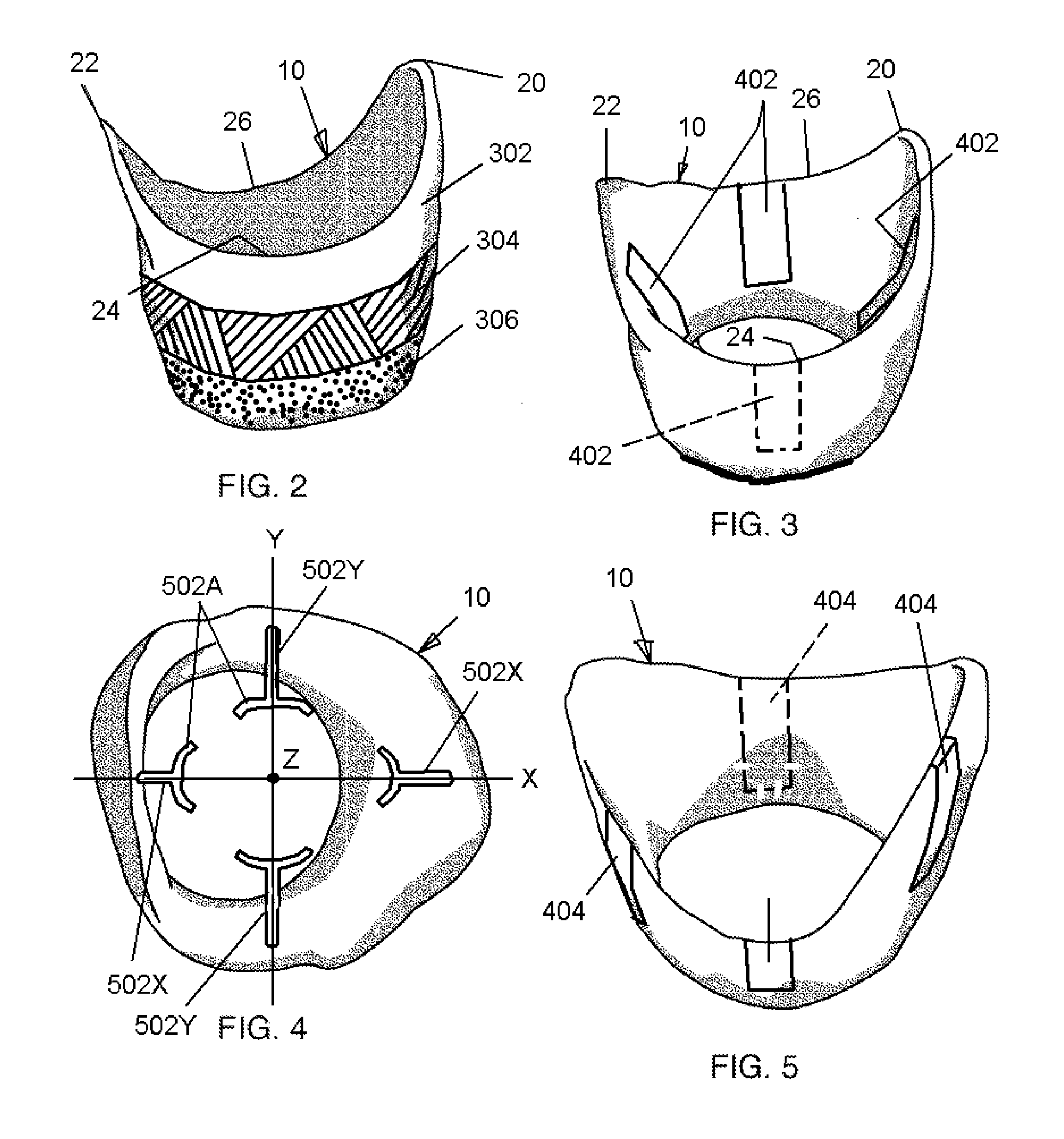Soft tissue preservation temporary (shell) immediate-implant abutment with biological active surface
a technology of soft tissue preservation and immediate implant abutment, which is applied in the field of dental implants, can solve the problems of affecting the function of the implant, affecting the esthetic outcome, so as to promote soft tissue reattachment and/or adherence, promote soft tissue attachment and/or adhesion of the dentogingival complex, and promote the effect of reattachmen
- Summary
- Abstract
- Description
- Claims
- Application Information
AI Technical Summary
Benefits of technology
Problems solved by technology
Method used
Image
Examples
Embodiment Construction
[0105]Referring now to the drawings, in which like reference numerals are used to refer to the same or similar elements, FIG. 1 illustrates a soft tissue preservation, dental implant arrangement, that comprises a hollow shell 10 with an interior volume and a shell axis 12. The shell is advantageously made of zirconium dioxide (ZrO2) ceramic material that is known to be bio-compatible. The hollow shell 10 thus has an outer bio-compatible surface for engaging a soft-tissue socket that is left in gingival tissue after a tooth has been extracted from a bone or bony socket under the gingival tissue. Shell 10 has a first lower perimeter 16 adapted for placement toward the bone socket of a lower mandibular, tooth. The first or inner perimeter 16 may be an upper perimeter if the shell is to be used for replacing of an extracted upper or maxillary tooth so that terms like “upper” and “lower” as used here are only relative terms and do not convey an absolute position or limitation of the inve...
PUM
 Login to View More
Login to View More Abstract
Description
Claims
Application Information
 Login to View More
Login to View More - R&D
- Intellectual Property
- Life Sciences
- Materials
- Tech Scout
- Unparalleled Data Quality
- Higher Quality Content
- 60% Fewer Hallucinations
Browse by: Latest US Patents, China's latest patents, Technical Efficacy Thesaurus, Application Domain, Technology Topic, Popular Technical Reports.
© 2025 PatSnap. All rights reserved.Legal|Privacy policy|Modern Slavery Act Transparency Statement|Sitemap|About US| Contact US: help@patsnap.com



